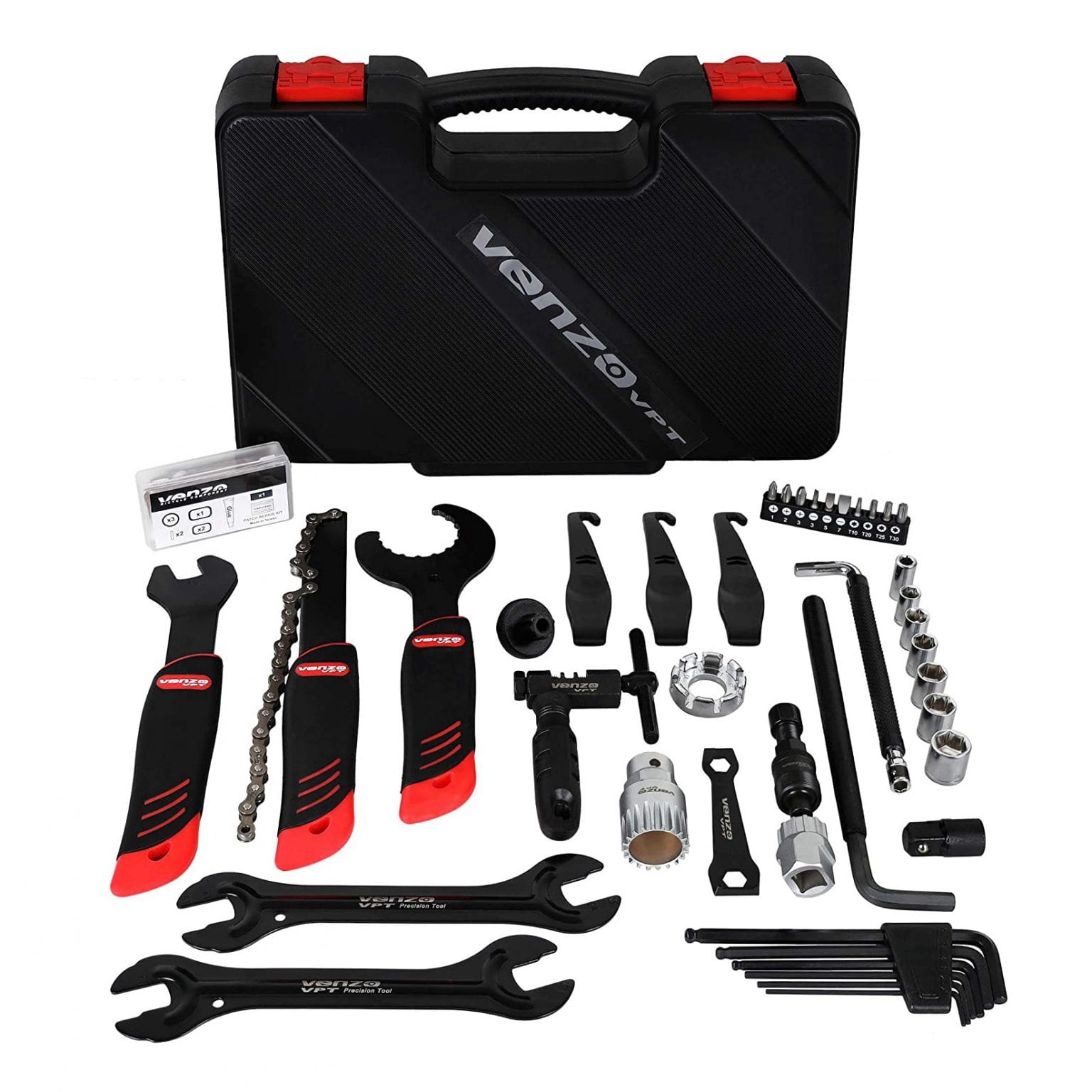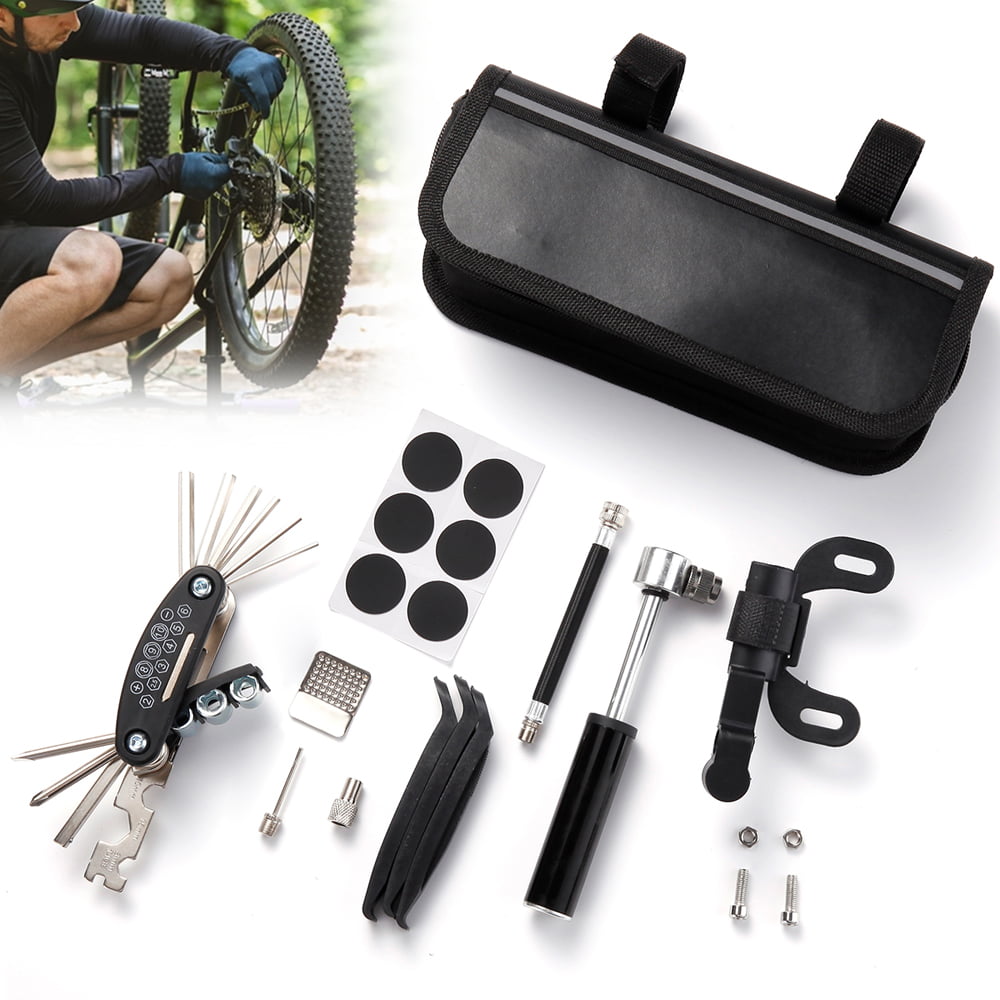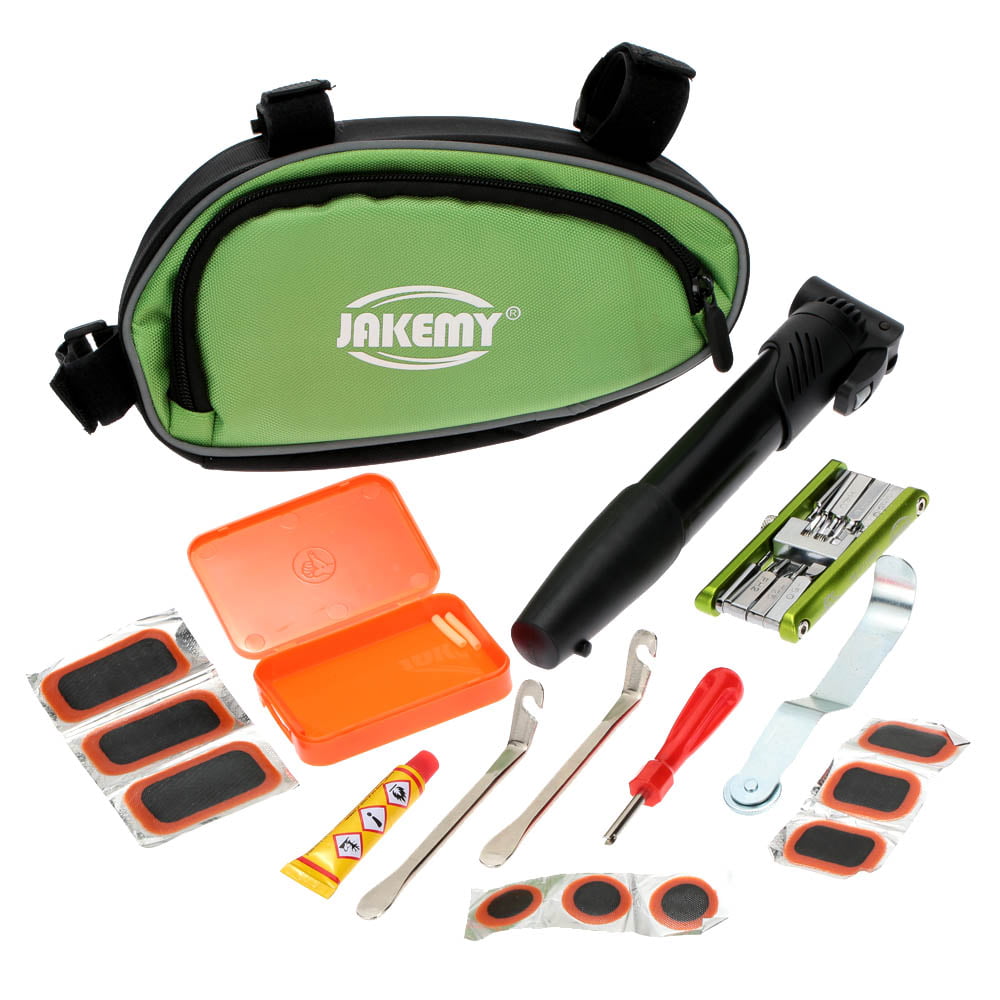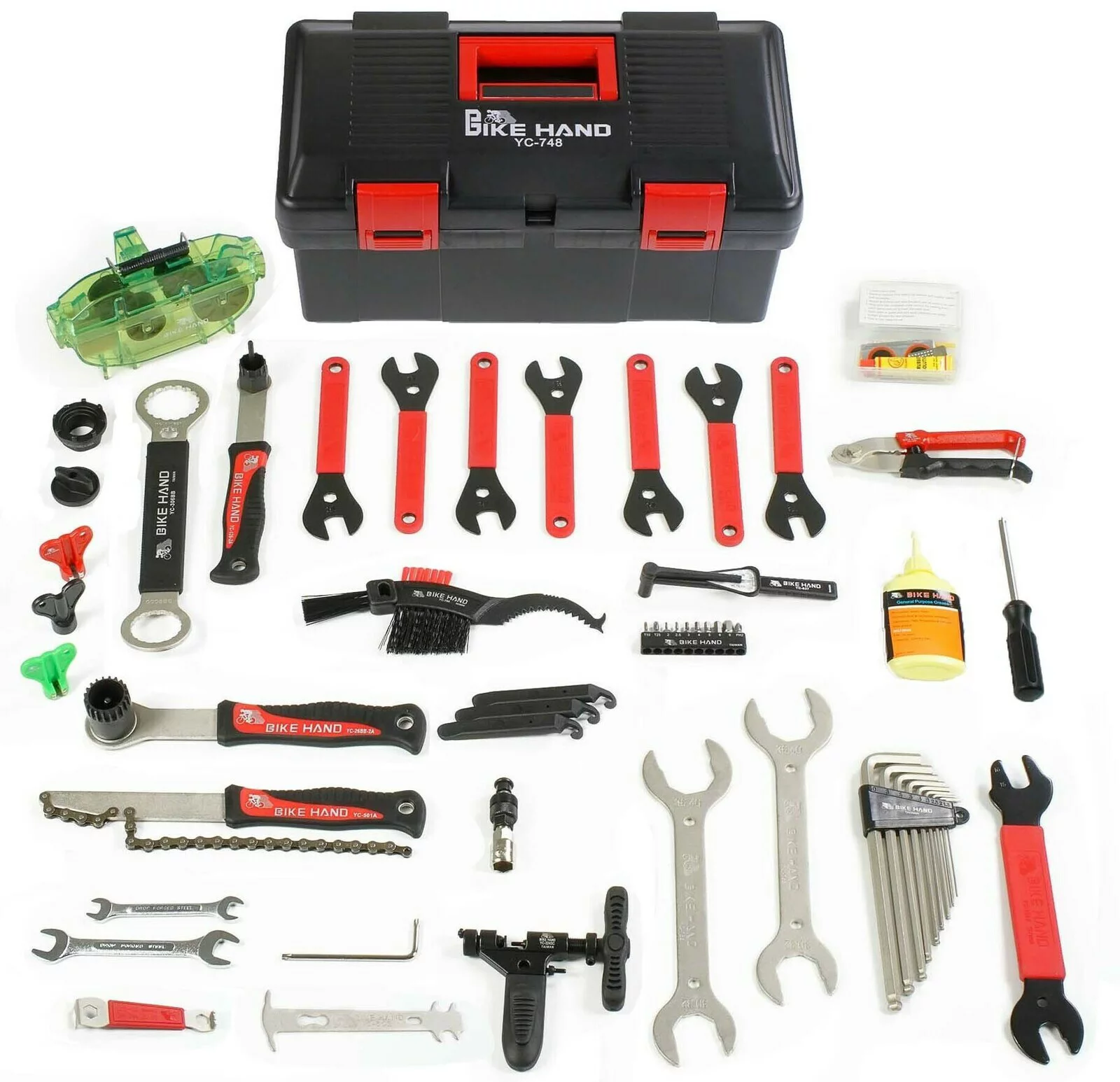I. Introduction

A. Importance of a bike repair kit
Having a bike repair kit is crucial for both seasoned cyclists and beginners. It allows you to handle minor repairs and adjustments on your own, saving time and money. Whether you’re out on a leisure ride or competing in a race, a well-equipped bike repair kit ensures that you’re prepared for any unexpected issues that may arise.
B. Overview of the article’s focus on essential tools and supplies
This article will provide a comprehensive guide on building your bike repair kit. We will discuss the essential tools and supplies you should include to handle basic maintenance and on-the-go repairs. By having the right tools and supplies readily available, you can keep your bike in top shape and minimize disruptions to your cycling experience.
II. Building Your Bike Repair Kit
A. Basic Tools for Bike Maintenance

To properly maintain your bike, you will need the following tools:
- Adjustable wrench and screwdrivers: These tools are essential for tightening bolts and adjusting components such as handlebars, brakes, and derailleurs.
- Tire levers and patch kit: Tire levers help remove the tire from the rim for repairs or replacing a tube. A patch kit allows you to fix punctures quickly and get back on the road.
- Hex keys and torque wrench: Hex keys, also known as Allen wrenches, are used to adjust and tighten bolts on various parts of your bike. A torque wrench ensures that you apply the correct amount of force when tightening bolts, preventing damage or breakage.
- Chain tool and tire pump: A chain tool allows you to remove and install chains, as well as fix broken or bent links. A tire pump is necessary to maintain proper tire pressure for optimal performance and safety.
B. Essential Supplies for On-the-Go Repairs
When you’re out on a ride, it’s important to have the following supplies in your bike repair kit:
- Spare tubes and puncture repair patches: Carrying spare tubes and puncture repair patches ensures that you can quickly replace a flat tire or repair punctures on the go.
- Multi-tool with various functions: A compact multi-tool with different functions, such as wrenches, screwdrivers, and a chain tool, can help tackle a range of repairs and adjustments.
- Quick links for chain repair: Quick links provide a quick and temporary fix for a broken chain, allowing you to continue your ride until a proper repair can be made.
- Emergency contact information: It’s crucial to have your emergency contact information, including your name, phone number, and any relevant medical information, readily available in case of accidents or emergencies.
III. Performing Basic Bike Repairs

A. Fixing a Flat Tire
- Removing the wheel and tire: Use your tire levers to carefully remove the tire from the rim, ensuring not to damage the inner tube or rim in the process.
- Locating and patching the puncture: Inflate the inner tube slightly and listen for any hissing sounds to locate the puncture. Once found, clean the area around the puncture and apply a patch from your puncture repair kit, following the instructions provided.
- Reinstalling the tire and wheel: Carefully align the tire with the rim, starting from one side and working your way around, making sure that the bead of the tire is properly seated on the rim. Finally, inflate the inner tube to the recommended pressure.
B. Adjusting Gears and Brakes
- Fine-tuning gear shifting: Use your multi-tool to adjust the limit screws on the rear derailleur, ensuring that the chain moves smoothly between gears without slipping or skipping.
- Adjusting brake calipers and pads: Align the brake calipers so that the brake pads make even contact with the rim. Use the barrel adjuster to fine-tune the brake cable tension, ensuring optimal braking performance.
- Checking and replacing brake cables: Inspect brake cables for signs of wear or fraying. If necessary, replace them by loosening the cable anchor bolt, removing the old cable, threading in the new cable, and tightening the anchor bolt.
C. Chain Maintenance and Repair

- Cleaning and lubricating the chain: Use a degreaser and a brush to remove dirt and grime from the chain. Once clean, apply a chain lubricant, ensuring to wipe off any excess.
- Removing and replacing a damaged chain link: Use your chain tool to push out the pin on the damaged link and remove it. Then, connect the two ends of the chain using a quick link, ensuring it is properly installed and secure.
IV. Emergency Bike Repairs
A. Broken Chain
- Using a chain tool to remove the damaged section: Use the chain tool to push out the pin on both ends of the damaged section, removing it from the chain.
- Installing a quick link to reconnect the chain: Connect the two ends of the chain using a quick link, ensuring it is properly installed and secure. Adjust the tension if necessary.
B. Bent or Misaligned Wheels
- Locating and marking the bent section: Spin the wheel and observe any significant wobbles or bumps. Use a marker or a spoke wrench to mark the bent section for adjustment.
- Adjusting spokes to straighten the wheel: Use a spoke wrench to tighten or loosen the appropriate spokes on each side of the bend, gradually bringing the wheel back into alignment.

C. Loose or Malfunctioning Components
- Tightening loose bolts and screws: Inspect your bike for any loose bolts or screws and use appropriate tools to tighten them. Pay attention to areas such as handlebars, seat post, and pedals.
- Fixing loose headset or bottom bracket: If you notice any play or looseness in the headset or bottom bracket, use the appropriate tools to adjust the bearings and eliminate any wobble or play.
V. Safety Tips and Maintenance Advice
A. Importance of regular bike maintenance: Regularly cleaning, inspecting, and lubricating your bike helps prevent issues and ensures a smooth and safe riding experience.
B. Safe practices when using bike repair tools: Always follow manufacturer instructions when using tools and wear appropriate safety gear. Take precautions to avoid injury while working on your bike.
C. Tips for prolonging the lifespan of your bike: Store your bike in a dry place, avoid extreme temperatures, and perform regular maintenance checks. Additionally, invest in quality components and accessories to ensure durability.
In conclusion, having a well-equipped bike repair kit and the knowledge to perform basic repairs empowers cyclists to handle common issues on the go. By understanding the steps for basic repairs, addressing emergencies, and following safety guidelines, you can keep your bike in top shape and ensure a safe and enjoyable riding experience. Remember to prioritize regular maintenance to extend the lifespan of your bike and avoid costly repairs.
